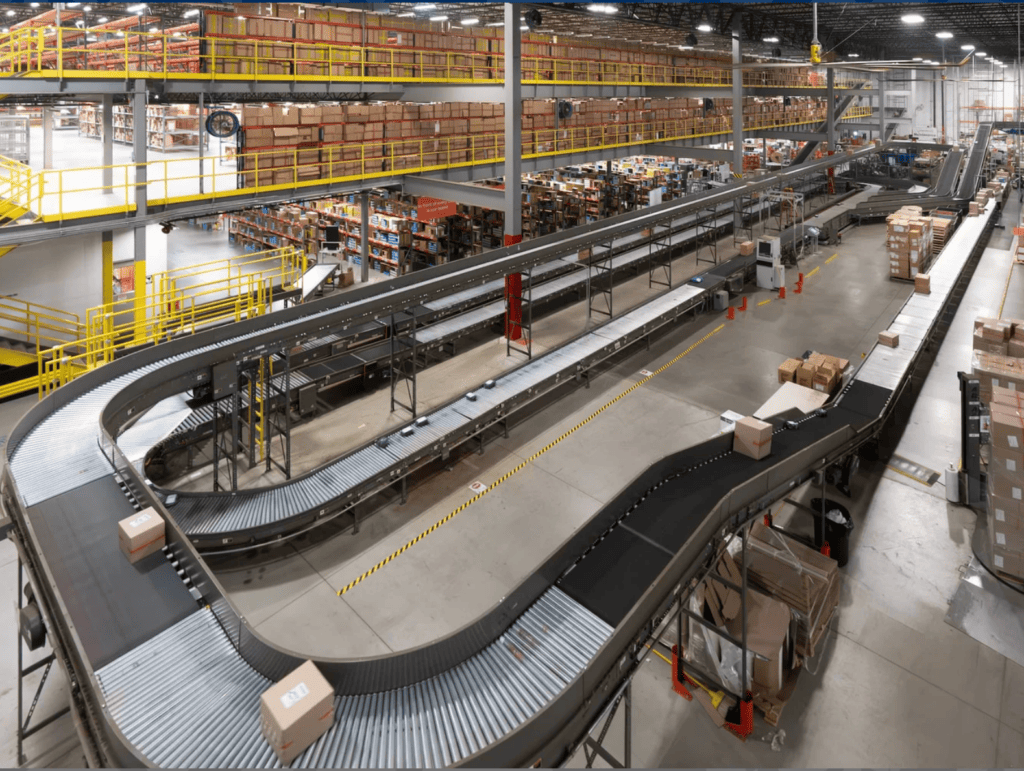What Is Pick Pack and Ship? Benefits, Challenges, and Tips

In today’s fast-paced world of e-commerce, businesses strive to streamline their operations to provide the best customer service while maintaining profitability.
One significant aspect of this efficiency drive is a procedure known as ‘pick pack and ship.’ It is a crucial aspect of the supply chain and fulfillment process that can directly impact a company’s success. This article will demystify the pick pack and ship process, outlining its benefits and challenges, and providing tips on optimizing this process for your business.
What Does Pick Pack and Ship Mean?
‘Pick pack and ship’ refers to the comprehensive process of fulfilling a sales order in a warehouse or distribution center. Pick and pack services are an integral component of all e-commerce businesses that ship products to consumers.
The pick pack ship process is a three-step process that ensures the right items promptly get to the right customers.
The ‘pick’ stage involves selecting the specific items for an order from the warehouse shelves. Businesses employ various picking methods, such as batch picking, zone picking, wave picking, and piece picking, each designed to maximize efficiency based on the warehouse setup and sales volume.
Next comes the ‘pack’ stage. The picked items are carefully packed into appropriate packing materials to ensure safe transit. This stage may also involve quality control checks, and the generation of a packing slip and shipping label.
Finally, the ‘ship’ stage is where the packed order is dispatched to the customer through a delivery service. This includes creating a shipping label, selecting the best shipping service, and making sure the package is handed off for delivery.
This whole pick pack and ship process is often managed and tracked using warehouse systems software, including the likes of Shipstation and Magento, which helps perform inventory management tasks efficiently, ensuring accurate and timely order fulfillment.
Pick and pack operations are usually conducted by e-commerce businesses out of a pick and pack warehouse or fulfillment centers, which may involve shipping orders through multiple sales channels.
Pick
The picking process is the first and crucial step in the pick pack and ship procedure. It involves retrieving the products ordered by the customers from the warehouse.
Accuracy and speed are vital to ensure customer satisfaction and efficient use of resources. Some key questions to ask when determining the best picking method for your team might include:
- What’s the size of your inventory?
- How many orders do you typically handle per day?
- What’s the layout of your warehouse?
The order-picking process is also routinely estimated to account for around 50-60% of warehouse operational costs.
Piece Picking
Piece picking, also known as order picking, is the simplest method. It involves picking one order at a time. This method is ideal for businesses with low order volumes or specialized orders.
Batch Picking
In batch picking, workers pick items for multiple orders simultaneously. All orders within the batch usually have one or more items located in the same location in the warehouse, reducing travel time and increasing efficiency. It’s best suited for businesses with moderate to high order volumes.
Zone Picking
With zone picking, the warehouse is divided into different zones, and pickers are assigned to specific zones. They pick items within their zone for multiple orders. This method works best for larger warehouses with high order volumes.
Wave Picking
Wave picking is a mix of zone and batch picking. Workers pick items for multiple orders within their assigned zones, but the picking is carried out at specified times throughout the day. This method is ideal for warehouses with high order volumes and a wide range of SKUs.
Pack
After the picking process is complete, the items move to the packing station. This is where the entire order is prepared for shipment. This process involves several important steps to ensure the items are properly packed and ready for delivery.
Firstly, the items are checked against the order to ensure accuracy—this is also done to ensure there are no missing items. This is crucial to ensure the shipment is correct. Any missing or incorrect items are identified and rectified before proceeding further.
Next, the packers choose the correct box size and packing materials to ensure safe delivery. They carefully consider the items’ size, fragility, and weight to determine the most appropriate packaging. Bubble wrap, packing peanuts, dunnage, or other protective materials cushion the items and prevent damage during transit.
In addition to packing the items securely, the packers include the necessary documentation, such as the packing slip. This document records the items included in the package and provides essential information for both the customer and the shipping carrier.
Ship
The final step is the shipping process. This involves selecting the best shipping method based on the package’s size, weight, and destination, and the customer’s preference and budget. It also includes creating and affixing the shipping label, and making sure the package is handed off to the shipping carrier.
Typically, once the order is shipped, the consumer will receive the tracking number through an automated email or notification.
Benefits of the Pick Pack and Ship System

A well-coordinated pick pack and ship system can be a game-changer for your supply chain operations. Here are some benefits of implementing these picking and packing methods:
Speedy Fulfillment: Fast Track to Customer Satisfaction
A streamlined pick pack and ship process leads to quick order fulfillment. Speedy fulfillment is crucial in today’s fast-paced e-commerce world where customers expect fast delivery. Quick order processing can enhance customer satisfaction and lead to repeat business.
Decreased Labor Costs: Streamline Your Workforce
An optimized pick, pack, and ship process can dramatically decrease labor costs. By implementing efficient picking strategies, workers can fulfill more orders in less time. This increased productivity can reduce the need for additional staff and overtime hours.
Cost-Effective Shipping: Save on Your Bottom Line
By efficiently managing the packing process, you can reduce shipping costs. Using appropriate packing materials and optimizing package size can lead to substantial savings on shipping charges, especially for businesses that handle high volumes of shipments.
Inventory Control
A well-managed pick, pack, and ship system can limit excess inventory. By ensuring that the right products are always available for fulfillment, you can avoid overstocking and tying up capital in excess inventory.
Precise Operations: Error Minimization Through Visibility
Implementing advanced inventory management software can enhance visibility into the picking and packing process, reducing the chances of errors. Better data analysis can help identify bottlenecks, inaccurate picks, and other potential issues, allowing for swift resolution and improving accuracy.
Challenges of the Pick, Pack, and Ship Process
While the pick, pack, and ship process can bring numerous benefits, it’s not without its challenges. Here are some obstacles that can impact efficiency and profitability if not properly addressed:
Planning: The Need for Foresight
Poor planning can wreak havoc on the pick, pack, and ship process. Insufficient consideration of warehouse layout, inventory organization, or sales forecasts can lead to inefficiencies, errors, and lost sales.
Disorganization
Poor organization within the warehouse can dramatically reduce efficiency. Misplaced items, cluttered aisles, and a lack of standardized processes can slow down picking times, lead to errors, and create safety risks.
Subpar Picking Strategies
Failure to optimize picking strategies can also impede the pick, pack, and ship process. Employing inappropriate picking methods given your order volume, warehouse size, and product range can lead to wasted time and increased labor costs.
The Packing Puzzle—Packing Materials and Damaged Goods
Incorrect packing materials and processes can lead to damaged goods, increased shipping costs, and dissatisfied customers. It’s crucial to choose the right materials for each item and ensure that packing processes are streamlined and efficient.
Tips for Efficient Pick, Pack, and Ship Operations
Warehouse performance KPIs to consider include inventory-to-sale ratios, shrinkage, order lead time, and inventory turnover—especially if edible products are involved.
While the challenges of the pick-pack and ship process can seem daunting, effective strategies and tips can make the operation more efficient.
Here are some practical recommendations to streamline your processes:
Warehouse Organization
Effective warehouse organization can drastically enhance the efficiency of your pick, pack, and ship operations. Keep aisles clear and ensure items are stored logically. Opt for a warehouse space with a layout that supports your picking method—not the other way around.
For instance, a warehouse using zone picking should group items by category, while a warehouse employing wave picking may align their warehouse setup with their delivery schedules.
Also, consider employing the volume inventory storage method, where popular items are placed in easily accessible areas. The warehouse will need a loading dock for courier services if a large volume of shipments are outbound on a daily basis.
Inventory Management
A robust inventory management system is crucial to the smooth functioning of the pick, pack, and ship process. Use inventory management software to track inventory levels in real time, anticipate stockouts, and prevent overstocking.
Such a system helps perform inventory management tasks efficiently, ensuring that your pick, pack, and ship operations always catch up.
Software Solutions
Investing in comprehensive software solutions can greatly simplify the pick, pack, and ship process.
Warehouse management software can help manage warehouse operations efficiently by providing the most efficient route for picking and suggesting the appropriate packing materials for each order. Shipping software can automate printing packing slips and shipping labels, saving time and reducing errors.
Quality Control Teams
Quality control teams are vital in picking, packing, and shipping. They ensure the correct items are picked and properly packed, checking for damage or defects before shipping.
This reduces the chances of returns and increases customer satisfaction, ultimately protecting your brand’s reputation. Remember, quality control is not just about checking—it’s about maintaining the high standards that your customers expect.
Embracing Efficiency: Pick, Pack, and Ship
When effectively managed, the pick pack and ship process can significantly enhance your business’s operational efficiency. It not only expedites the order fulfillment process but also provides opportunities for reducing labor costs, minimizing errors, and ensuring customer satisfaction.
But the journey to creating a streamlined pick pack and ship operation has its challenges. Planning, adequate organization, ineffective picking strategies, and incorrect packing processes can hamper the efficiency of the entire process.
That said, overcoming these challenges is within reach. With a keen focus on warehouse organization, vigilant inventory management, implementation of supportive software solutions, and establishing dedicated quality control teams, businesses can navigate the complexities of the pick, pack, and ship process.
Ultimately, these measures can transform your warehouse operations, giving your business the competitive edge needed to excel in today’s dynamic e-commerce landscape.
The pick-pack-and-ship model is more than just an order fulfillment process—it’s a strategic tool for growth, customer satisfaction, warehouse efficiency, and overall success. So, take a moment to assess your current processes and consider how these insights and tips could improve your warehouse operations. Remember, an efficient warehouse is the first step to stellar customer service, and ultimately, the growth of your e-commerce business.
